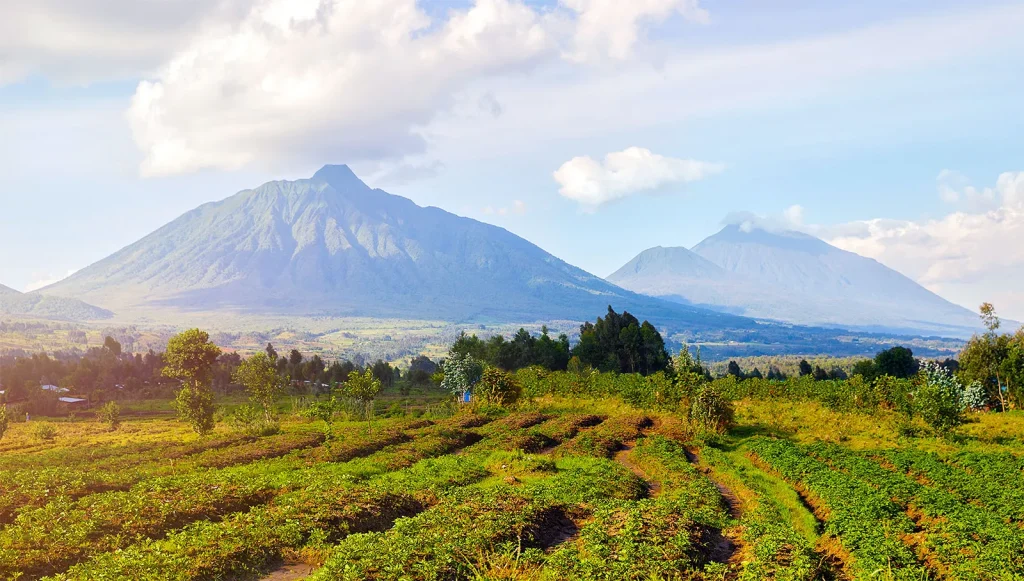Nestled within the Virunga Mountains of Rwanda, Kasirimbi Volcano stands as an enigmatic geological wonder.
Kasirimbi is part of the Virunga volcanic range, a result of tectonic activity along the East African Rift. The rift, a continental plate boundary, is slowly pulling apart, creating a dynamic geological environment. Kasirimbi, like its counterparts in the Virunga Mountains, was formed through successive eruptions that deposited layers of lava, ash, and other volcanic materials.
The geological composition of Kasirimbi is characterised by basaltic lava flows, which contribute to the distinctive appearance of the volcano. Over time, these layers have built up to create a peak that now stands as a testament to the forces shaping the Earth’s crust.
Elevation and Physical Characteristics of Mount Kasirimbi
Kasirimbi reaches an impressive elevation of 4,507 metres above sea level, making it one of the prominent peaks in the Virunga range. Its conical shape is typical of stratovolcanoes, reflecting the alternating layers of lava, ash, and rocks that have accumulated over millennia.
One of the intriguing features of Kasirimbi is its caldera—a large, crater-like depression at the summit of the volcano. Calderas are formed through the collapse of the central part of a volcano following a significant eruption. The presence of a caldera adds to the geological complexity of Kasirimbi, providing scientists with valuable insights into the volcano’s history and eruptive patterns.
Mineral Composition and Soil Fertility
The volcanic soils around Kasirimbi are rich in minerals, offering fertile ground for agriculture. Local communities have harnessed the benefits of these nutrient-rich soils for centuries, cultivating crops on the slopes of the volcano. The mineral composition of the soil contributes to the lush vegetation that blankets the lower reaches of Kasirimbi, creating a unique ecosystem within the volcanic landscape.

Environmental Impact of Mount Kasirimbi
While Kasirimbi’s volcanic activity has contributed to the fertility of the surrounding soil, it also poses challenges to the environment. Eruptions, though infrequent, can lead to the displacement of communities and the alteration of ecosystems. Ongoing research and monitoring aim to better understand the potential risks and mitigate the impact of volcanic activity on both the environment and local communities.
Tourism and Conservation
Kasirimbi’s geological allure has not gone unnoticed by the tourism industry. Guided hikes to the summit offer enthusiasts the opportunity to witness the volcano’s geological features up close. Tourism not only provides a source of revenue but also plays a pivotal role in funding conservation efforts in the Virunga region. Striking a delicate balance between exploration and preservation is essential to ensuring the longevity of this geological marvel.
Under the surface of Rwanda’s Kasirimbi Volcano lies a captivating story of geological processes, environmental impact, and the delicate interplay between nature and human activity. As scientists continue to study and understand this majestic peak, it remains an integral part of Rwanda’s landscape, inviting both locals and visitors to appreciate the intricate beauty concealed beneath its surface.


